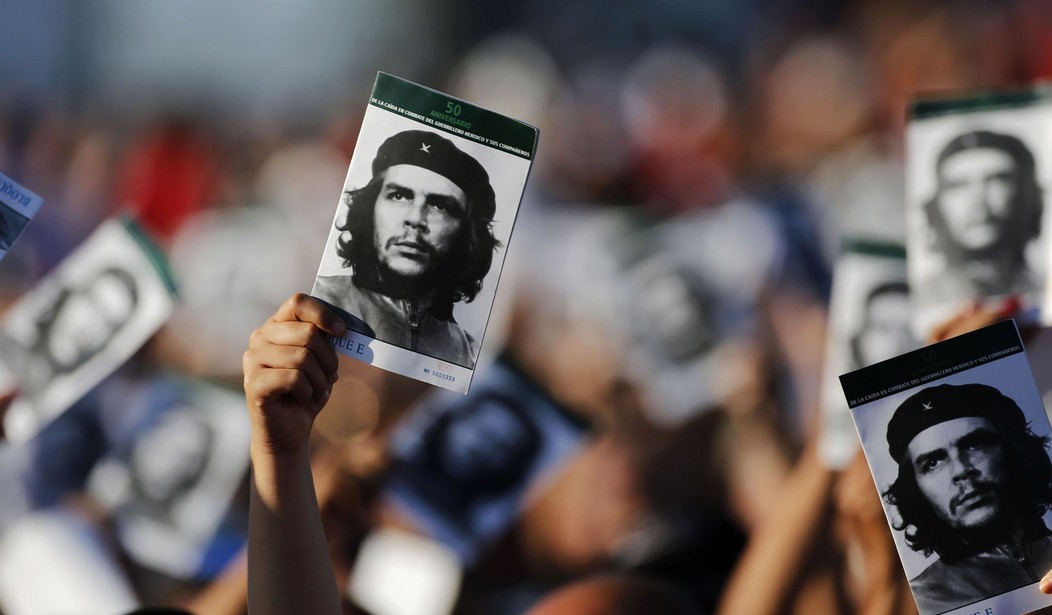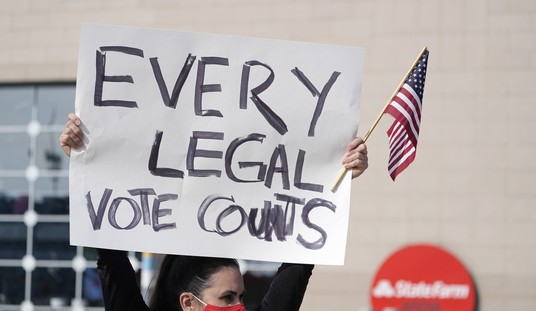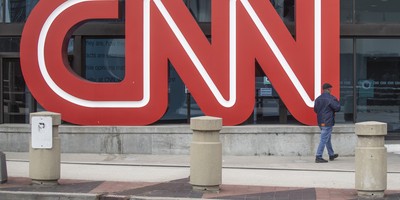“To us, Che was a symbol of boldness, intelligence, internationalism, self-sacrifice, solidarity and, as he said, “at the risk of appearing ridiculous,” love. Che rejected personal gain and privilege for the leaders in a struggle for a fair and just society; he lived as he asked others to live.”(Former Weatherman terrorist Bill Ayres, writing in The Nation. Oct 8th.)
In fact, “Che Guevara’s house was among the most luxurious in Cuba,” wrote Cuban journalist Antonio Llano Montes about the mansion Che Guevara “nationalized” (stole at Soviet gunpoint from rightful owner and moved into) in January 1959.
After a hard day at the office signing firing-squad warrants and blasting teenagers’ skulls apart with the coup-de-grace from his .45, Che Guevara retired to his new domicile just outside Havana on the pristine beachfront. Until a few weeks prior, it had belonged to Cuba’s most successful building contractor. Today, the area is reserved exclusively for tourists and Communist party members. Here’s the rest of the description of Che’s Havana mansion:
''The mansion had a boat dock, a huge swimming pool, seven bathrooms, a sauna, a massage salon and several television sets. One TV had been specially designed in the U.S. and had a screen ten feet wide and was operated by remote control (remember, this was 1959.) This was thought to be the only TV of its kind in Latin America. The mansion's garden had a veritable jungle of imported plants, a pool with waterfall, ponds filled with exotic tropical fish and several bird houses filled with parrots and other exotic birds. The habitation was something out of A Thousand and One Nights."
It was in this mansion early in 1959 that Soviet GRU agent Angel Ciutat tutored his eager pupil Che on the finer points of Stalinizing Cuba. Among the many excellent reasons for the reluctance of Castroites to loosen (even slightly) their Stalinist grip on power lies El Compromiso Sangriento. (The Blood Covenant.)
Recommended
You see, amigos: most who have climbed to positions of authority in Castro's regime did so as accomplices in mass-murder. In brief, all Castroite military and police officer candidates took their places as firing squad murderers, as explained by Soviet GRU officer Ciutat to the (probably) panting, salivating Che.
A brief aside: historically and almost universally, some members of a firing squad shot blanks, to assuage their conscience. But such assuaging would contradict the Castroite firing squads' most vital purpose.
The point of the Blood Covenant was to bond the murderers, especially those in line for future regime leadership, with the murderous regime. The more shooters the more murderers. The more murderers thus manufactured the more people highly-motivated to resist any overthrow (or even modification) of their system. Karma, as they say--especially in the form Nuremberg justice-- can be a real b*tch. Castroites wanted no part of it.
And after 16,000 firing-squad murders (according to the Black Book of Communism, not exactly a Cuban-exile tabloid) Cuba's officer corps was plenty "bonded" to the regime.
Think about that for a second: a murderous policy handed down by a Soviet butcher and eagerly implemented by an Argentine psychopath of murdering Cuban patriots, instantly became government policy in newly "nationalist" Cuba. Got it?
From his prison-cell window, a former Cuban freedom-fighter and political prisoner named Tito Rodriguez-Oltmans, watched this blood covenant in action. "Every evening the military cadets and regime officials would be bused in and armed with Belgian .308 caliber FALs as they lined up for the firing squad," recalls Mr. Oltmans, a prisoner in La Cabana prison in the early 1960s. “As darkness fell the condemned patriot -- shirtless and gagged -- would be dragged to the execution wall and bound. The cadets and officials would line up only four meters in front of the patriot and all had loaded weapons." ... FUEGO!
Mr Rodriguez Oltmans somehow avoided death by a Castroite firing-squad but witnessed, at extremely close quarters, such a murder of one of his cellmates, a legless 21 year old boy named Tony Chao. A few months earlier Tony had been shot several times in the legs during a firefight with Castro’s Soviet-led troops. Only his injuries allowed the Castroites to capture Tony alive, only to amputate his shattered legs before murdering him.
Shortly before his murder Tony received a letter from his mother. “My dear son,” she counseled, as recalled by Mr Oltmans, “how often I’d warned you not to get involved in these things. But I knew my pleas were vain. You always demanded your freedom, Tony, even as a little boy. So I knew you’d never stand for communism. Well, Castro and Che finally caught you. Son, I love you with all my heart. My life is now shattered and will never be the same, but the only thing left now, Tony . . . is to die like a man.”
“FUEGO!” Mr Rodriguez-Oltmans then watched from his cell window as Che Guevara’s lackey yelled the command and the firing squad’s bullets shattered Tony’s crippled body, just as he’d reached the stake on crutches , lifted himself and stared resolutely at his murderers. But Che’s firing squads usually murdered a hero who was standing. The legless Tony presented an awkward target. So some of the volley went wild and missed the youngster. Time for the coup de grâce.
Normally it’s one .45 slug that shatters the skull. Mr Rodriguez-Oltmans recalled that Tony required . . . POW!-POW! . . . POW! — three. Seems the executioner’s hands were shaking pretty badly. But they finally managed. Castro and Che Guevara had another notch in their guns. Another enemy dispatched — bound and gagged as usual.
Compare Tony’s death to the arch-swine, arch-weasel and arch-coward Che Guevara’s capture. “Don’t shoot!” whimpered the arch-murderer to his Bolivian captors. “I’m Che! I’m worth more to you alive than dead!”
Then ask yourselves: whose face belongs on T-shirts worn by youth who fancy themselves, rebellious, freedom-loving and brave?

























Join the conversation as a VIP Member